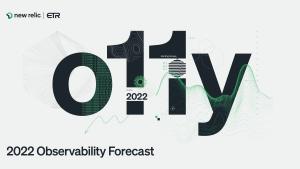After closing the curtain on 2022, we’re continuing to review our 2022 Observability Forecast report to apply what we’ve learned about observability as we move forward into the new year. We’ll be recapping and highlighting key insights in the next few months.
The first installment of our webinar series focused on what full-stack observability means for IT leaders and is available to watch at any time. The webinar series continues in February when we’ll tackle the future of observability. As you’re considering your observability goals for the new year, now’s a great time to watch this video, review highlights as well as the report itself, and sign up for the March 1 webinar.
Why does full-stack observability matter?
In this year-end webinar, we covered key insights from the 2022 Observability Forecast report, based on interviews with more than 1,600 technology professionals from small businesses to global enterprises. I had the pleasure of moderating a lively conversation with Peter Marelas, New Relic Regional CTO, APJ, and the report’s coauthors—Alicia Basteri, Senior Technical Content Marketing Manager at New Relic, and Daren Brabham, Ph.D., Senior Director Analyst at ETR.
As part of our conversation on the overall state of observability, we talked about:
- The trends driving observability. Nearly half of respondents cited the increased focus on security, governance, risk, and compliance as the main driver, and there were other interesting trends driving observability.
- Key observability use cases. The topics of optimizing cloud resources and support of digital transformation efforts are tied for first place.
- Top observability capabilities deployed. The report outlined the top 17 observability capabilities. Network, security, and database monitoring lead the list.
- The number of monitoring tools teams use. The report found that most organizations (94%) use more than two tools.
- The benefits of observability. The top benefits we talked about were uptime, performance, and reliability.
The panel discussed the future of observability, and Peter pointed out that “organizations need to first get the observability basics right, focusing on all of the reactive use cases, making sure their full-stack observability is in place and they can quickly respond to problems and have strategies in place to mitigate incidents.”
A lot of people think of observability as just managing reliability and solving problems. Those are two very important things, and most of our customers will use observability for that. But observability has evolved a long time ago and can support a much broader set of use cases. Security is one, and these trends [found in the report] really demonstrate that.
We finished the discussion by answering several interesting questions from the audience and highlighting that the report is still available in full at newrelic.com/o11y.
The future of observability
In March, we’ll dive into the 2022 Observability Forecast findings on the future of observability. New Relic panelists will talk about new APM features, OpenTelemetry enhancements, and the latest content delivery network (CDN) monitoring and video streaming monitoring that will help make the future of observability a reality in 2023.
Update: Here's a video of the March 1 webinar:
다음 단계
Dive into the 2022 Observability Forecast to see more of the insights and best practices uncovered in the research.
Or better yet, sign up for a free New Relic account, ingest your data, and start reaping the benefits of observability today.
이 블로그에 표현된 견해는 저자의 견해이며 반드시 New Relic의 견해를 반영하는 것은 아닙니다. 저자가 제공하는 모든 솔루션은 환경에 따라 다르며 New Relic에서 제공하는 상용 솔루션이나 지원의 일부가 아닙니다. 이 블로그 게시물과 관련된 질문 및 지원이 필요한 경우 Explorers Hub(discuss.newrelic.com)에서만 참여하십시오. 이 블로그에는 타사 사이트의 콘텐츠에 대한 링크가 포함될 수 있습니다. 이러한 링크를 제공함으로써 New Relic은 해당 사이트에서 사용할 수 있는 정보, 보기 또는 제품을 채택, 보증, 승인 또는 보증하지 않습니다.



